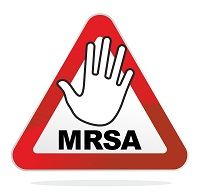Exponential Increases in MRSA Infection in Australian Atopic Dermatitis Patients
Compared with the general population, patients with atopic dermatitis are significantly more susceptible to Staphyloccocus aureus colonization and skin infections.

The title character in the classic children’s book Alexander and the Terrible, Horrible, No Good, Very Bad Day had a host of issues, including a newly discovered cavity, a finicky cat who prefers to sleep with Alexander’s brother, and a missing lunch-time dessert. He had such a bad day that he dreamed of escaping to Australia. Luckily for Alexander, unlike the estimated 5%-20% of children worldwide, he didn’t have atopic dermatitis (AD).
AD is bad enough in its own right, with tender sores, often on the face and cheeks, and with potential itching so severe that in many cases, it prevents children from sleeping. Worse, scratching can lead to skin infections. Worse still, one of those potential infections is methicillin-resistant Staphylococcus aureus (MRSA).
While clinical knowledge around MRSA is plentiful, that knowledge doesn’t make the infection any easier to treat.Patients with AD are highly predisposed to cutaneous bacterial, viral, and fungal infections. Compared with the general population, patients with AD are significantly more susceptible to Staphyloccocus aureus (SA) colonization and skin infections. SA is the most common complication of AD.
A new review in the Australasian Journal of Dermatology looked at the prevalence of MRSA in the AD population and found an enormous increase over the past 15 years. The study looked at skin swab results and other data for 298 AD patients under the age of 18, including patients’ characteristics and comorbidities who were admitted to a large teaching hospital in South Australia. Using logistic regression, the study showed that compared with 1999—2002, in 2003–2006 patients were approximately threefold more likely (P = .350) to test positive for MRSA. In 2007–2010, they were approximately13-fold more likely (P = .030) and in 2011–2014 theywere approximately 24-fold more likely to test positive for MRSA (P = .008).
The Australian study didn’t find significant increases in methicillin-sensitive Staphylococcus aureus over the same period. The authors point out that further research is needed to examine why MRSA presence is exploding while other related skin infections are apparently not.
The increased presence of MRSA colonization—along with the rate of increase—is a disturbing reminder that preventive actions such as vigorous hand washing before and after treating AD patients is essential.
One aspect of MRSA that is poorly understood by the general public is the concept of colonization with MRSA and live infection. Staphylococcus aureus is a bacterium that lives normally on human skin surfaces. MRSA is simply an antibiotic resistant strain of Staphylococcus aureus, and it can live on the skin for long periods or even permanently without infection, typically in the nose, throat, armpit, or genital areas. Active infection occurs when a bacterial strain undergoes uncontrolled growth. But studies have shown that asymptomatic MRSA carriers can easily pass these bacteria on to others through direct contact or even just by living in the same environment. This is especially true for the elderly, children, or others suffering from conditions that tax the immune system.
Some infections are like that. Even in Australia.